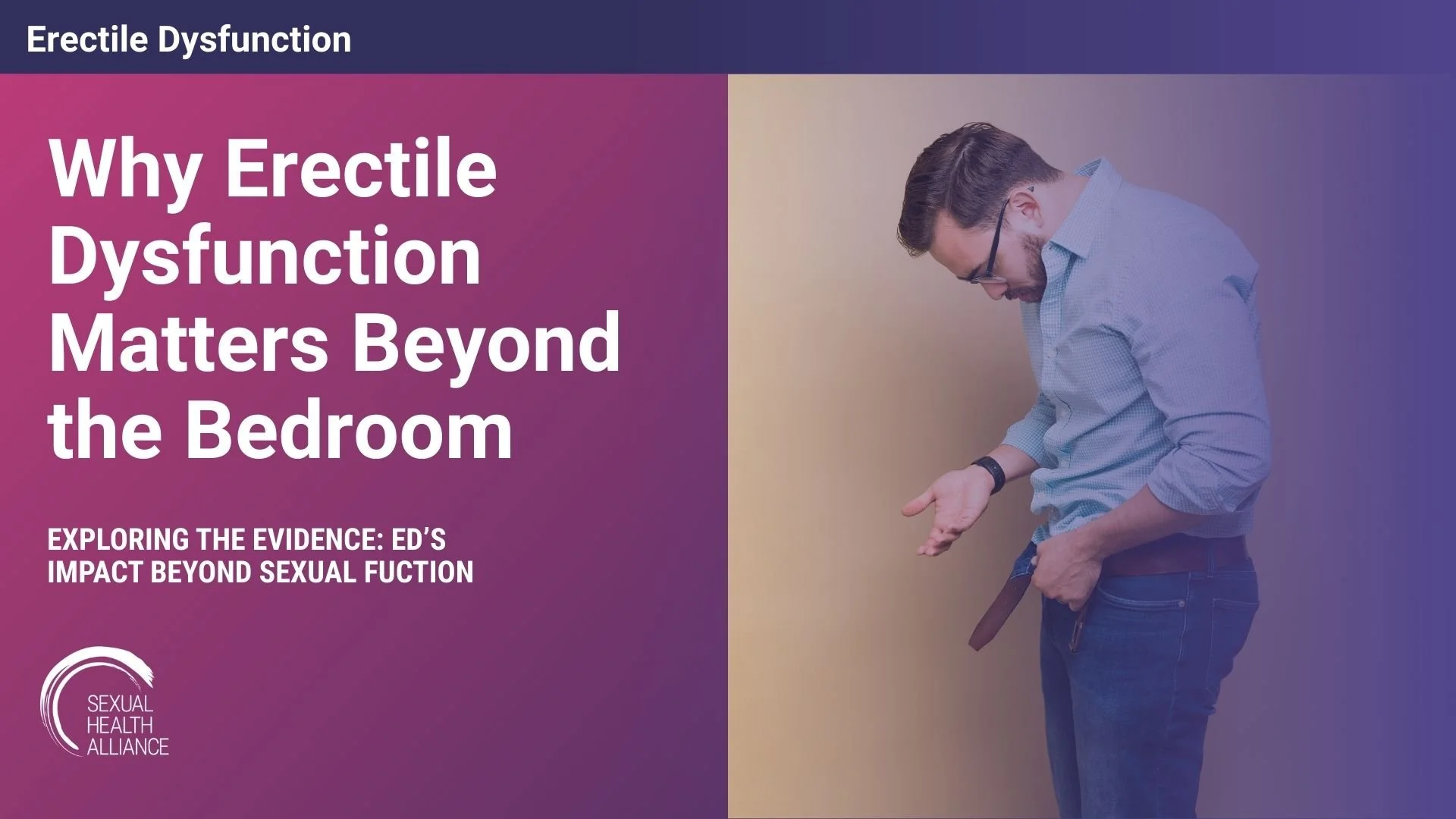Erectile dysfunction (ED) is one of those topics that pops up everywhere — in group chats, Instagram stories, and whispered conversations over drinks. Clinically, ED is defined as “the persistent inability to achieve or maintain an erection sufficient for satisfactory sexual performance.” In everyday conversation? It’s often described simply as not being able to get it up. And here’s the thing. It’s a lot more common than people think.
Globally, ED is on the rise. In 2025, the expected number of individuals dealing with ED is over 300 million. Two decades ago, that number was roughly half, around 150 million. This steady increase reflects more than just aging populations. It also points to modern stress, lifestyle changes, sleep quality, substance use, and underlying health issues like diabetes and cardiovascular disease; all of which can influence sexual function.
What’s important to remember is that ED isn’t just a “performance problem.” It’s a health signal. Erections rely on a complex balance of hormones, blood flow, nerve function, and psychological well-being. This means that when ED shows up, it can sometimes be an early warning sign of something deeper, like heart disease or depression.
So if you’re dealing with ED, you’re far from alone – and it doesn’t have to stay a silent struggle. Talking about it, getting screened, and addressing lifestyle or medical factors can make a huge difference. Because sexual health is real health, and the more we normalize these conversations, the better off everyone is.
Physical causes of Erectile dysfunction
Physical health conditions are some of the most commonly researched and understood risk factors for ED. Some of these include:
Diabetes: A recent systematic review found that about 2 in 3 people with diabetes also experience ED globally.
Cardiovascular disease, hypertension, and atherosclerosis: These affect how blood flows (including to the penis).
Beyond chronic conditions, infections can also play a role in erectile function. Even short-term illnesses like colds or flu can impact erections temporarily.
And then there’s COVID-19, which didn’t just mess with our lungs and social lives. Research shows it can cause ED both short- and long-term, possibly by fueling inflammation and limiting blood flow. COVID-19 highlights that even temporary illnesses may have lasting consequences, but little is known about how these infections build and affect overall health.
Mental health and ED
As sexual health professionals, we know that there is a strong connection between the mind and body. ED can be caused by stress, anxiety, relationship conflicts, or worries about sex performance. Depression, in particular, has been strongly linked to ED; One study found that patients with depression are almost 40% more likely to have ED than men without depression.
Erectile dysfunction and Lifestyle factors
Everyday habits matter, too. Research shows that there are some lifestyle factors that could put you at a higher risk for ED.
Men exposed to secondhand smoke had a slight increase in risk in ED compared to those who did not, but this was not statistically significant (so watch out for your friends, too)
Encouragingly, erectile quality improved by 25% in smokers who quit after one year
Heavy alcohol use: Shown to have higher levels of ED compared to general population
Exercise: Physical activity can help decrease ED
Chronic sleep disorders: Growing research suggests a link between chronic sleep disruption and ED.
Broader consequences of ED
ED doesn’t just matter in the bedroom. It has much broader implications that may affect students or clients you work with.
Quality of life: Generally, individuals that experience ED have reported lower quality of life. Those with ED reported lower quality of life than those without ED, studies have shown that men with ED more frequently miss work and heightened work impairment compared to colleagues without ED.
Mental health: Research shows that those experiencing ED are more likely to report lower levels of self-esteem, increasing anxiety and worse depression incidence of depression in men with ED is almost 3 times greater.
Physical health: ED has been cited as a potential first sign of a silent cardiovascular disease. Some experts have proposed post-COVID-19 ED patients undergo cardiovascular assessments because of this link.
Sexual health: Beyond in-the-moment consequences of ED, it may have longer-term effects, causing individuals to withdraw from sexual intimacy.
Implications for sexual health professionals
Early detection: ED may represent the first symptom of other health conditions. Identifying it early not only supports physical health but also helps individuals navigate the relational and emotional challenges that come with ED.
Open dialogue: Shame and stigma often silence conversations about ED, leading to delays in diagnosis and care. Creating a safe space for discussion is essential.
Destigmatize ED: Reducing stigma helps reporting, diagnosis and appropriate treatment.
Assessment: Comprehensive evaluations across different domains can support individuals to understand and navigate ED.
Tailored Management: Treatment approaches may involve lifestyle modifications, medication, therapy, or couple-based approaches depending on the underlying contributors.
Empower individuals through education: Many cases of ED are influenced by gaps in sexual knowledge, unrealistic expectations, or poor sexual techniques. Ongoing education (for both clients and professionals) is key. SHA offers events, resources, and certification programs designed to strengthen these skills and enhance quality of care.
Conclusions
Erectile dysfunction is not only a sexual concern but a broader indicator of physical, psychological, and relational health. For sexual health professionals, this means moving beyond symptom management to holistic care; addressing stigma, encouraging open dialogue, and recognizing ED as both a quality-of-life issue and a potential marker of underlying disease.
By integrating research insights with patient-centered approaches, professionals can support individuals navigate ED, improve health outcomes, and foster more open conversations about a common sexual health challenge worldwide.
If you’re passionate about helping others on their sexual health journeys, explore SHA’s certification programs, designed to equip you with the expertise and tools to make a meaningful impact in this field.
And don’t miss SHA’s Male Sexual Health and Functioning Conference this December, where global experts will discuss topics including erectile dysfunction, testosterone and hormones, and inclusive care for queer, trans, and nonbinary clients assigned male at birth. You’ll gain practical insights into helping clients navigate both physical and emotional challenges while building confidence, connection, and healthier sexual lives.
Written by Emma Sell-Goodhand, MPH
Emma is a doctoral student and Global One Health Fellow at North Carolina State University studying adolescent sexual health. She brings prior experience as a Technical Advisor at the World Health Organization.
Want to become an in-demand sexual health professional? Learn more about becoming certified with SHA!




